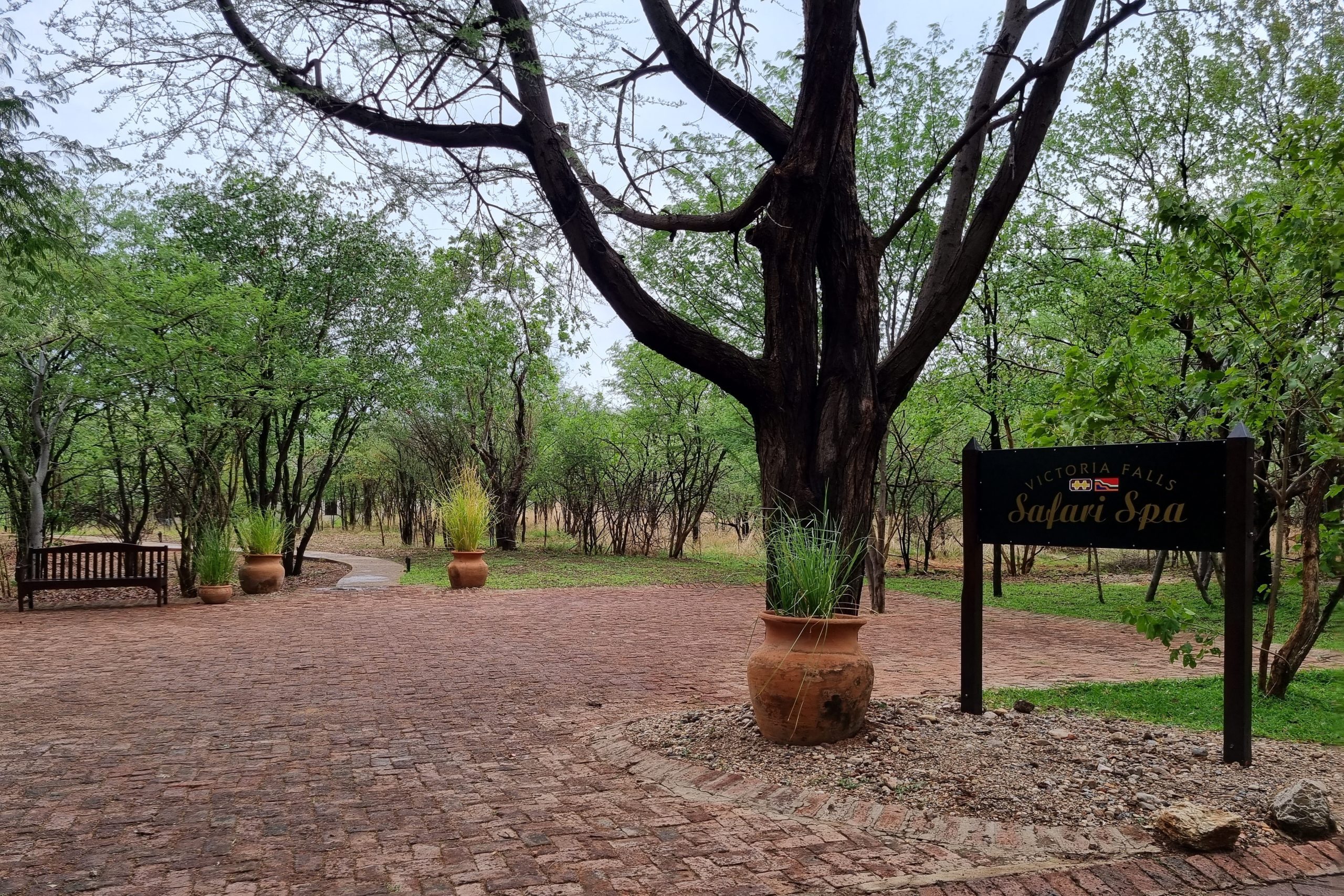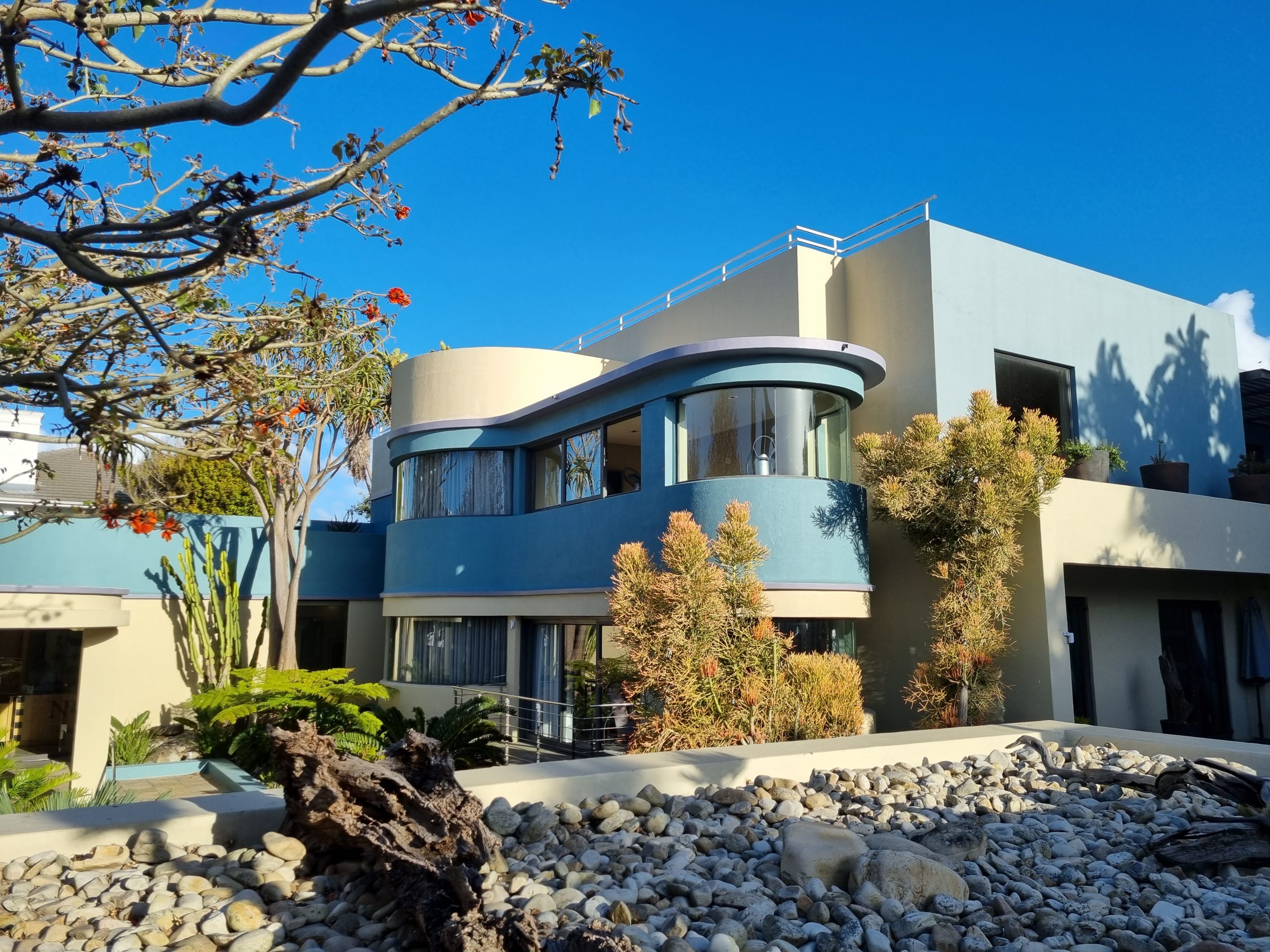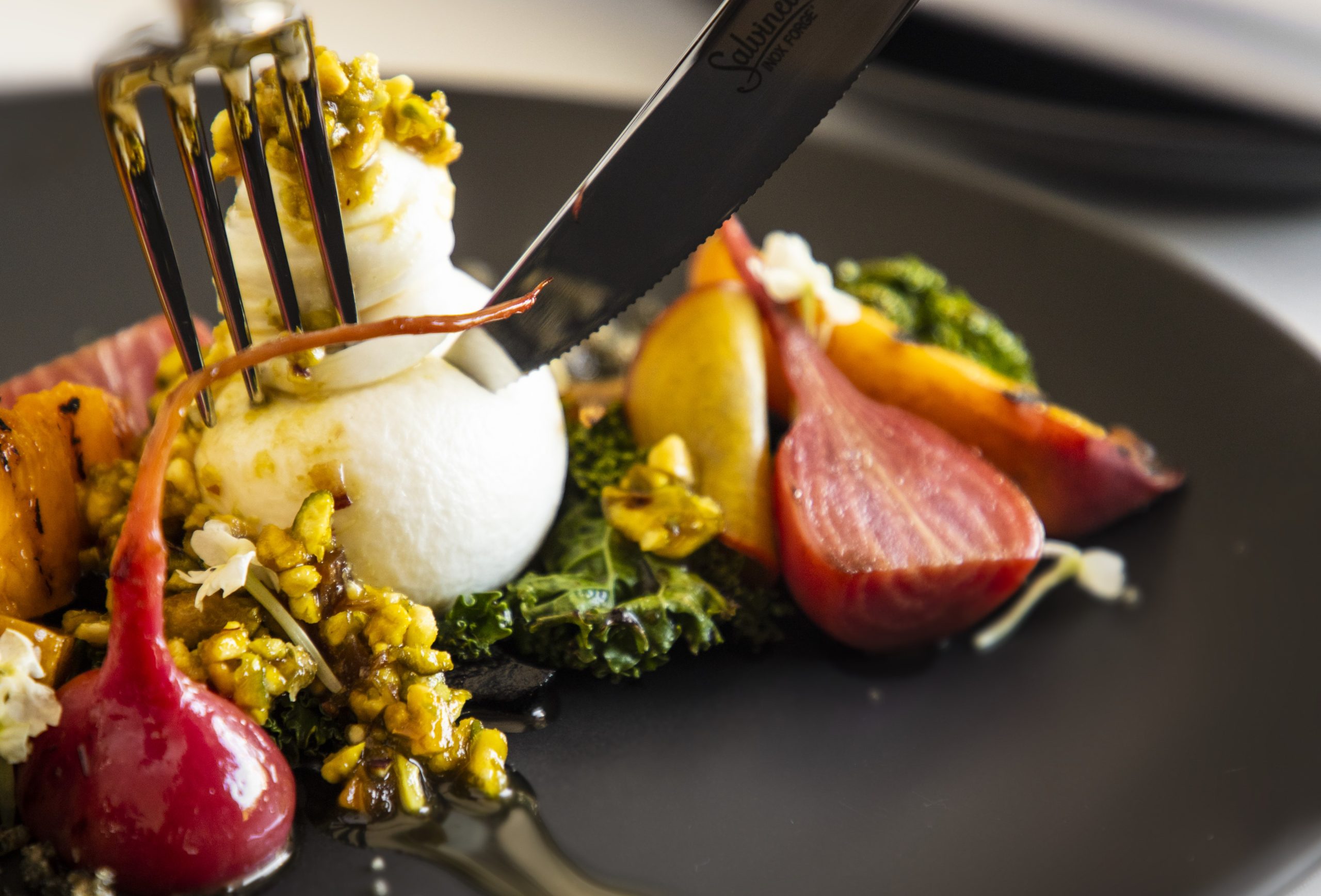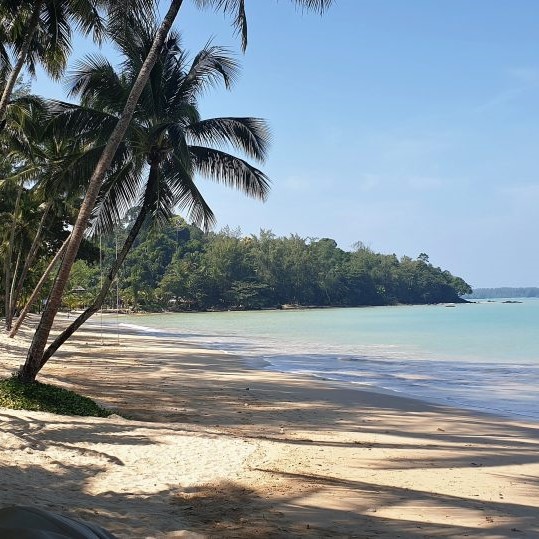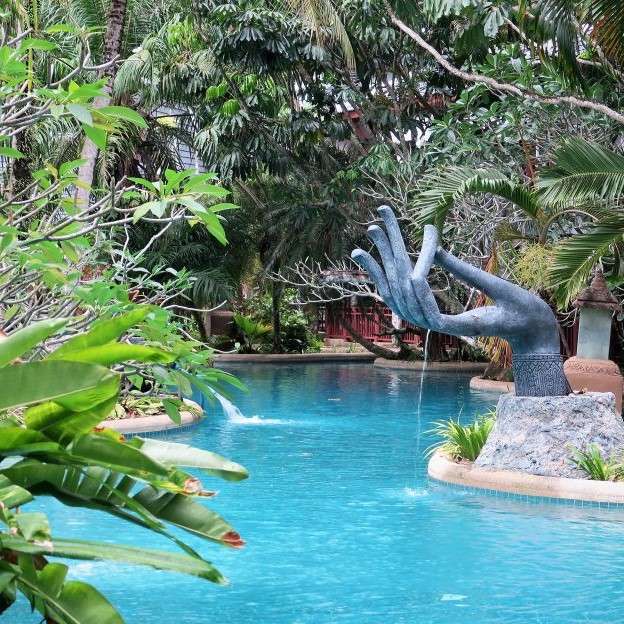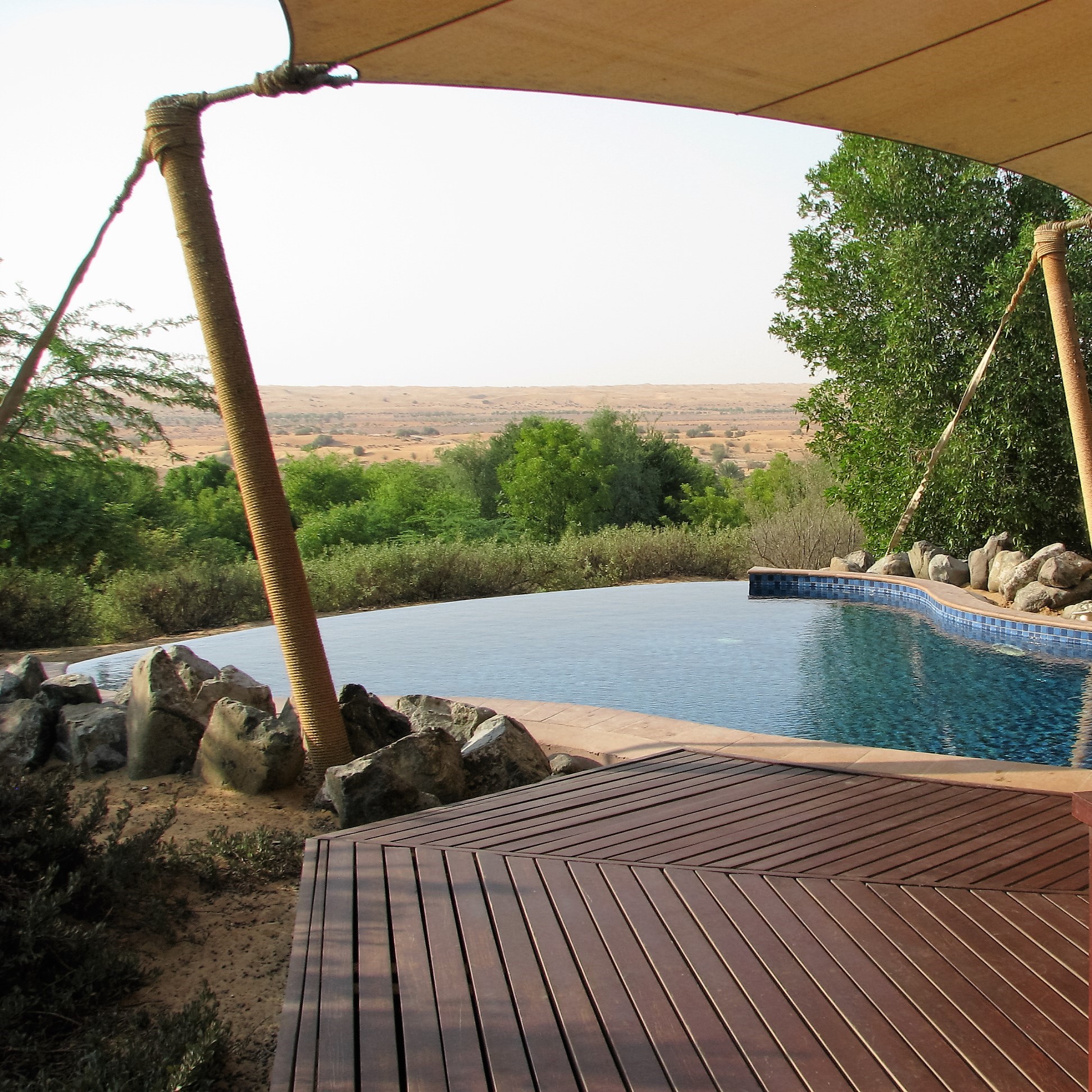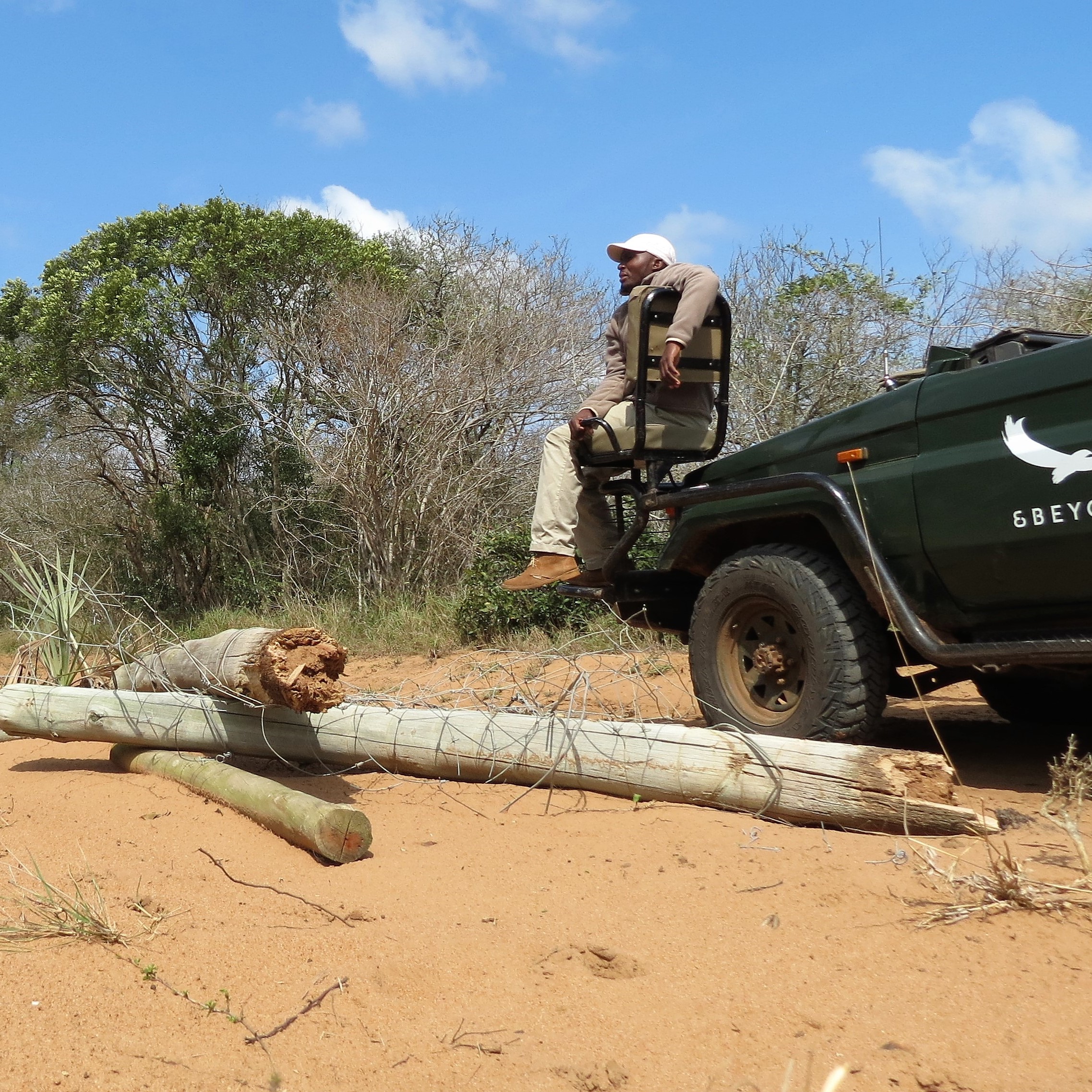Getting off the beaten track in Bangkok is one way to say ‘NO’ to over-tourism. There’s much to be said about over-tourism, and a quick google search will reveal posts about irate locals protesting their overcrowded cities, island beaches being closed to allow the natural environment to recover and city officials moving Instagram-worthy branding in an attempt to reduce the inundation of local landmarks by selfie-obsessed tourists.
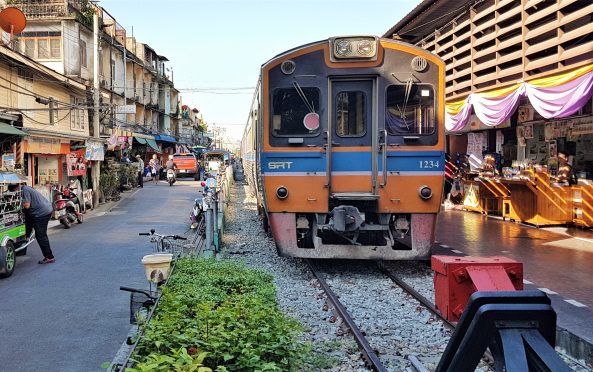
In a recent visit to Bangkok my hubby and I had the opportunity of seeing the reality of over-tourism in action and chose to see this incredible city differently, by getting off the beaten track.
The desire to travel is often sparked by the need to see certain landmarks – in Paris its the Eiffel Tower; in London its Buckingham Palace and in New York its Time Square… and in Bangkok it’s the Grand Palace.
We thought we’d give it a bash, it is after-all a ‘must-do’ when in Bangkok. Which is what every other selfie-stick wielding tourist and tour group in the city was thinking. One look at the mass of humanity waiting to gain entry was enough for us to look at each other knowingly and walk straight past.
and alleyways of Bangkok was thanks to Local Alike a travel company offering a wide range of off the beaten track community-based tourism experiences – experiences that contribute to the preservation the local ways of life, culture and tradition as as well as preservation of the environment.
and placid pooches, hopping on a local commuter train that shook its way along jungle lined tracks, past wooden homes that had seen better days to a nondescript train station in the middle of nowhere where we caught a ride through the suburbs on an open-back local taxi to a fishing village in a place called Bang Khun Thian.
Here we popped into a local primary school where we learnt about mangroves, made tie-dyed cloth and walked through their organic vegetable garden, which included chickens and frog farming (yep, for frog’s legs).
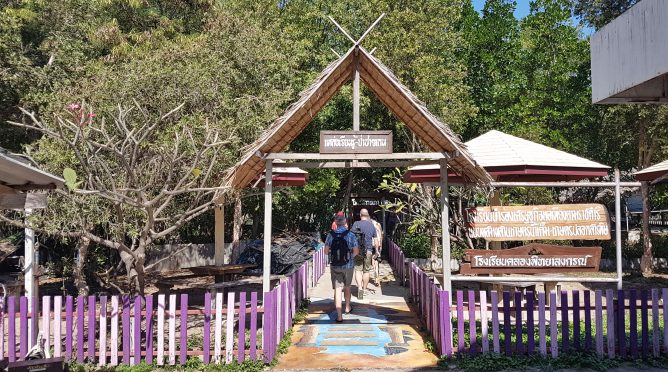

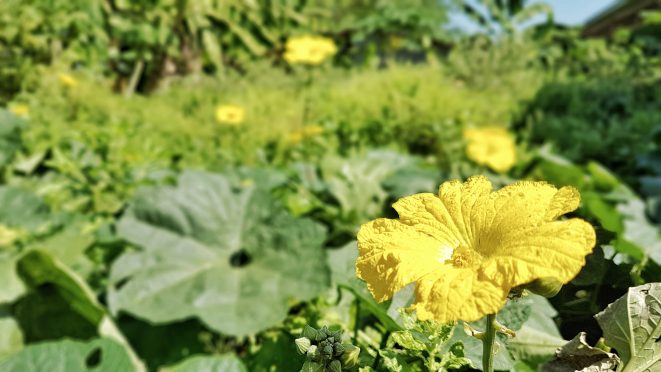 This was followed by a longtail boat ride with Uncle Sorn, to his homestead where his family served us a lunch of traditional (H-O-T) Thai food of soup, prawns, fish, vegetables and cockles was served.
This was followed by a longtail boat ride with Uncle Sorn, to his homestead where his family served us a lunch of traditional (H-O-T) Thai food of soup, prawns, fish, vegetables and cockles was served.
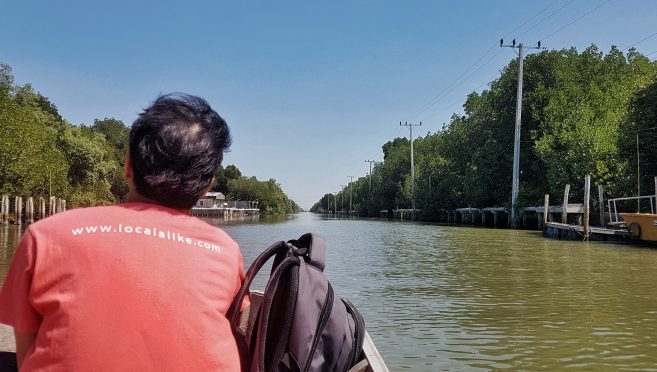
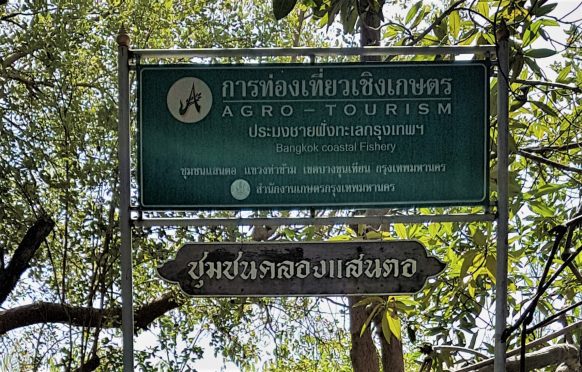
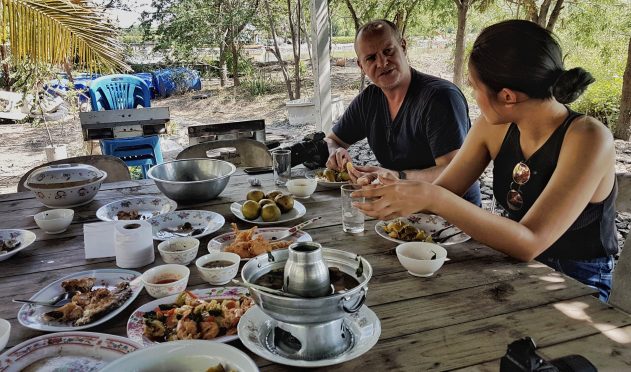
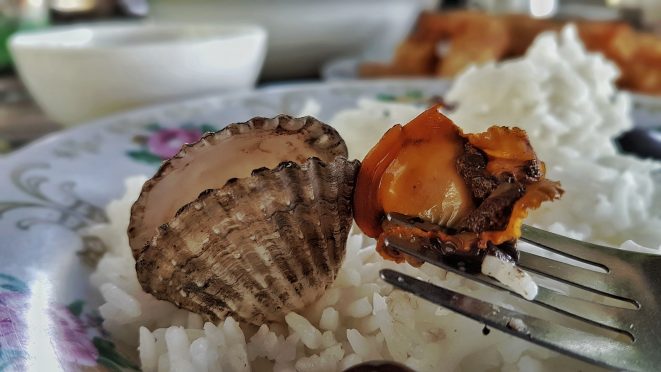 And where do the cockles come from?
And where do the cockles come from?
The large rectangular pond in front of the house… where some of us ended up knee deep in mud – someone had to stay dry & clean to document it!
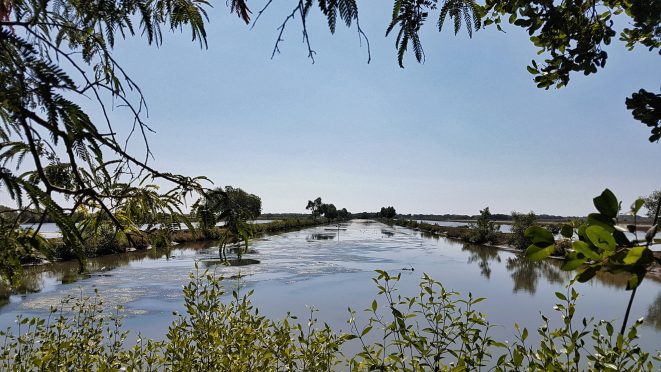
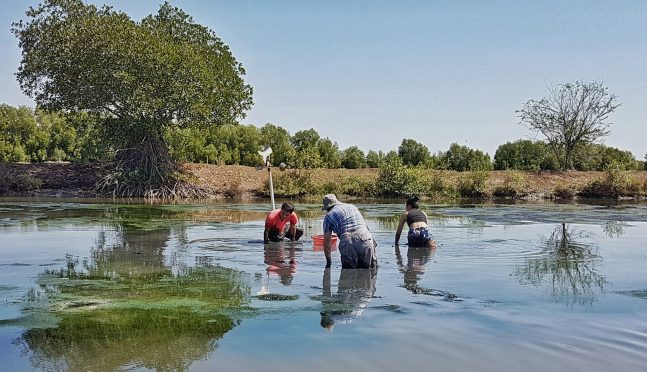
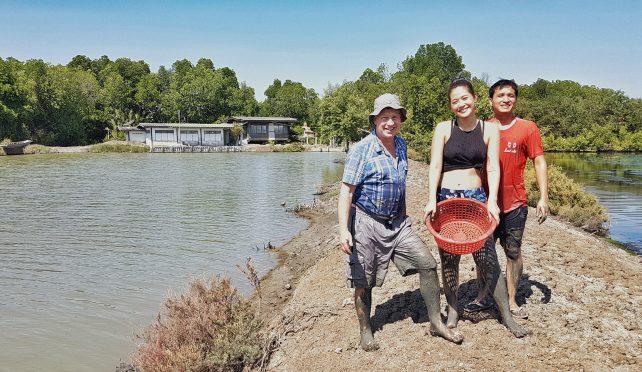 Once we had cleaned up Uncle Sorn explained the intricacies of cockle and prawn farming to us, as well as the difficulties – he and his wife are aged and once he is too old there is no one to take over his farm. On this sad note he walked us to the jetty and waved us goodbye in yet another boat.
Once we had cleaned up Uncle Sorn explained the intricacies of cockle and prawn farming to us, as well as the difficulties – he and his wife are aged and once he is too old there is no one to take over his farm. On this sad note he walked us to the jetty and waved us goodbye in yet another boat.
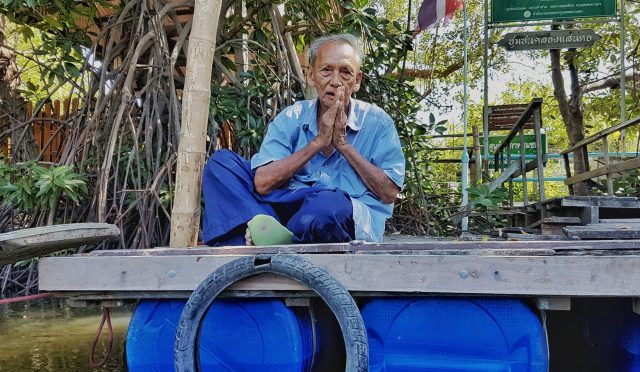 This time it was to see a submerged region that just 45 years ago had homes, now all that remain are the electricity poles randomly sticking out of the water in what has now become part of the sea – and some people still think that climate change is a myth! The aquatic bird life on this section was amazing as the waterways are lined with mangroves and the remaining structures make a great perch.
This time it was to see a submerged region that just 45 years ago had homes, now all that remain are the electricity poles randomly sticking out of the water in what has now become part of the sea – and some people still think that climate change is a myth! The aquatic bird life on this section was amazing as the waterways are lined with mangroves and the remaining structures make a great perch.
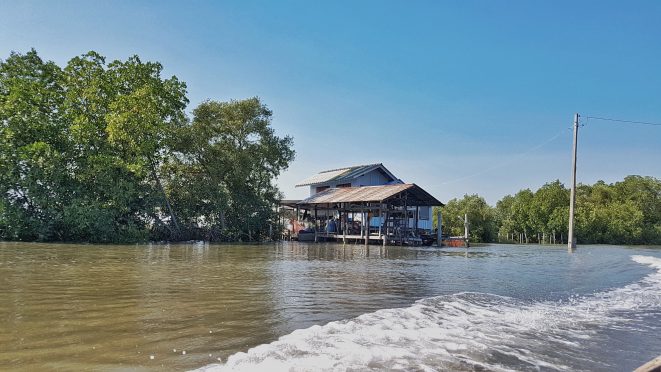 A visit to the iconic Jim Thompson Museum is on most people’s ‘must-do’ list of when in Bangkok. Not just to see the restored home of the ‘legendary silk king’ Jim Thompson, which houses his collection of antiques, some over 1,000 years old, but also to rest awhile in the beautiful gardens which offer are a wonderful escape from the hustle and bustle of the city.
A visit to the iconic Jim Thompson Museum is on most people’s ‘must-do’ list of when in Bangkok. Not just to see the restored home of the ‘legendary silk king’ Jim Thompson, which houses his collection of antiques, some over 1,000 years old, but also to rest awhile in the beautiful gardens which offer are a wonderful escape from the hustle and bustle of the city.
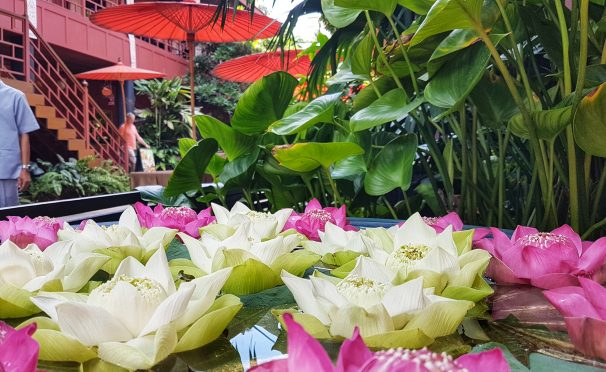 In 1967 at the peak of his life Jim disappeared without a trace while on holiday in Malaysia. His legacy to the world would be the craft of traditional silk weaving, which he found within the narrow alleys of Bangkok, and admiring its beauty decided to take Thai silk to the world. So popular are these silk products still that visitors converge on the onsite shop with their gold cards, Euros and Dollars ready to shop up a storm.
In 1967 at the peak of his life Jim disappeared without a trace while on holiday in Malaysia. His legacy to the world would be the craft of traditional silk weaving, which he found within the narrow alleys of Bangkok, and admiring its beauty decided to take Thai silk to the world. So popular are these silk products still that visitors converge on the onsite shop with their gold cards, Euros and Dollars ready to shop up a storm.
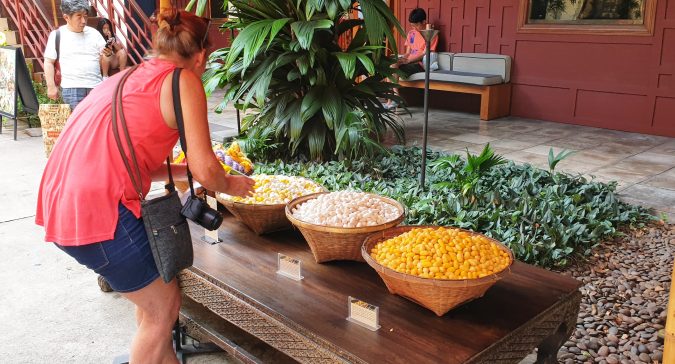
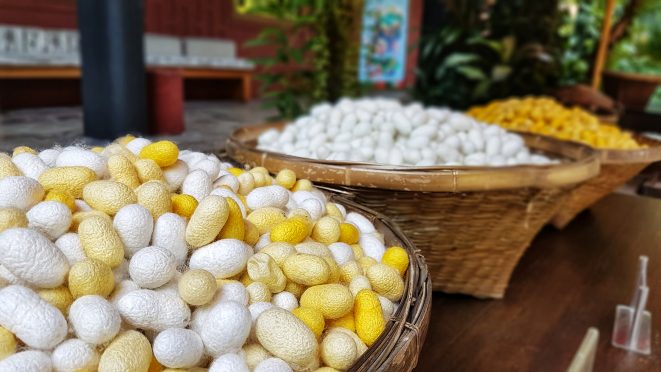
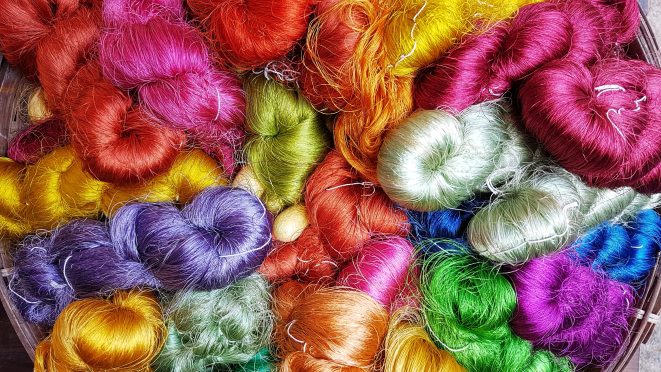 We could have chosen to visit Jim Thompson Museum as a stand-alone experience, but with Local Alike Khun Arm guiding us, we discovered another world across a nearby canal in Baan Krua Nua – an old community with a rich history and heritage in the production of Thai silk. The people of this district have specialised in the weaving of silk since after WWII and it was with Jim Thompson’s help that their craft found an international market.
We could have chosen to visit Jim Thompson Museum as a stand-alone experience, but with Local Alike Khun Arm guiding us, we discovered another world across a nearby canal in Baan Krua Nua – an old community with a rich history and heritage in the production of Thai silk. The people of this district have specialised in the weaving of silk since after WWII and it was with Jim Thompson’s help that their craft found an international market.
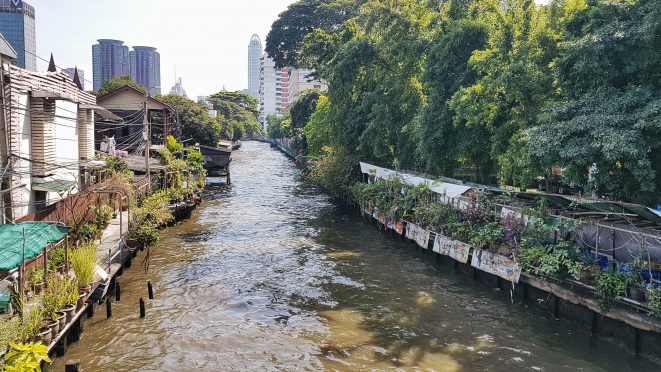
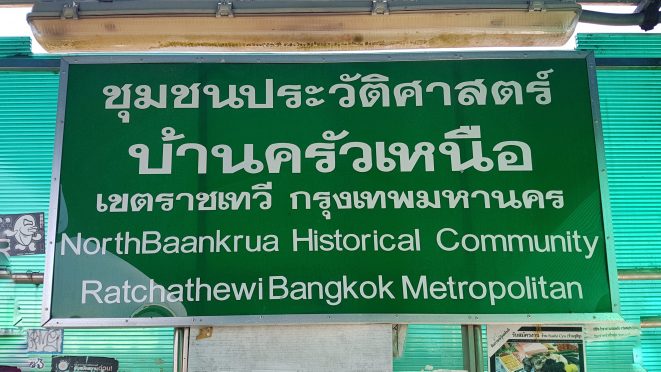 We started at Uncle If’s house where we saw how the traditional looms worked, watched the bobbins being filled and then watched Malai, who has been weaving silk for 50 years, in action with the loom – it takes a whole day to create 6m of silk cloth. Following this we went to Uncle Ood’s house to learn how silk is boiled, washed and then dyed the traditional way.
We started at Uncle If’s house where we saw how the traditional looms worked, watched the bobbins being filled and then watched Malai, who has been weaving silk for 50 years, in action with the loom – it takes a whole day to create 6m of silk cloth. Following this we went to Uncle Ood’s house to learn how silk is boiled, washed and then dyed the traditional way.
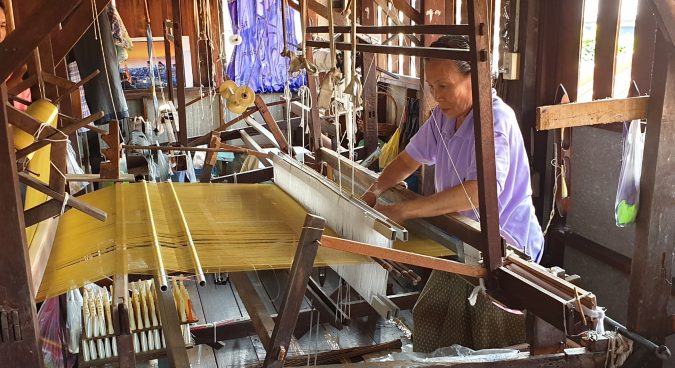
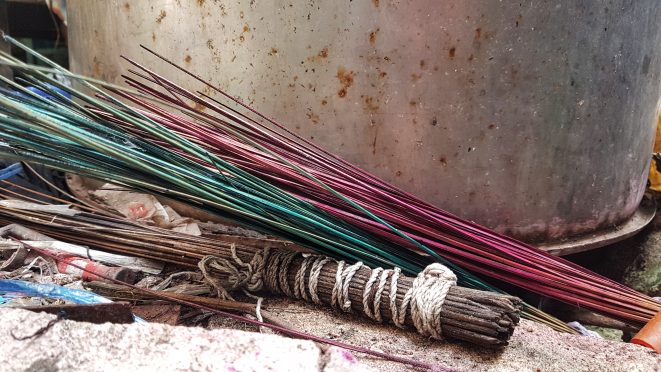 Inspired by our local experiences with Khun Arm we decided to do as the locals do and catch a water taxi to Old Bangkok and try visit the Grand Palace – even though we had been warned about possible crowds from other travellers. Catching the water taxi was easy, once we had worked our way through narrow alleyways and asked for directions we were soon aboard and churning our way through the choppy water of the canal. The boat drivers know only fast or slow creating waves and much splashing!
Inspired by our local experiences with Khun Arm we decided to do as the locals do and catch a water taxi to Old Bangkok and try visit the Grand Palace – even though we had been warned about possible crowds from other travellers. Catching the water taxi was easy, once we had worked our way through narrow alleyways and asked for directions we were soon aboard and churning our way through the choppy water of the canal. The boat drivers know only fast or slow creating waves and much splashing!
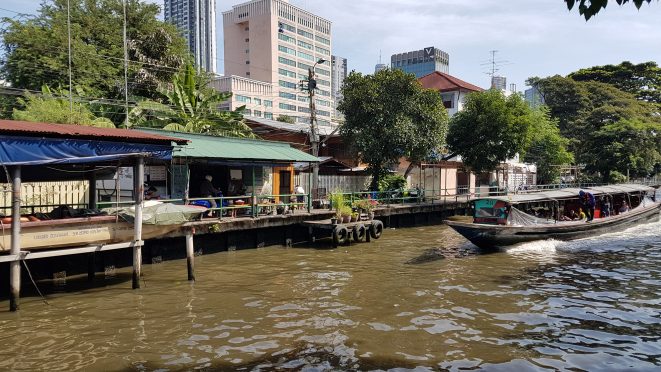
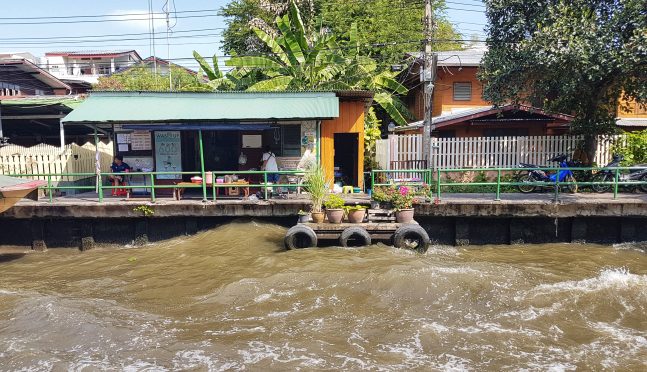 We passed traditional wooden homes – some in better repair than others, narrow walkways often overflowing with potted gardens and laundry hanging precariously close to the splash zone. On board we were protected by thick plastic anti-splash sides which limited our visibility but also saved us from being doused in yucky water!
We passed traditional wooden homes – some in better repair than others, narrow walkways often overflowing with potted gardens and laundry hanging precariously close to the splash zone. On board we were protected by thick plastic anti-splash sides which limited our visibility but also saved us from being doused in yucky water!
Emerging to street level, taking careful note of where we were, we headed down streets lined with trees adorned with fairy lights, as well as banners and garlands in reverence and respect to the king.

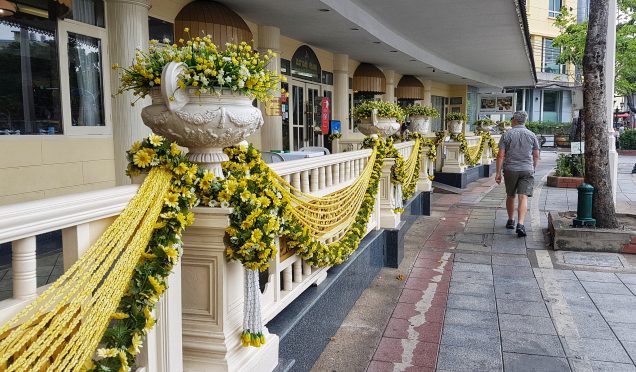
 Detouring by tuk-tuk to the Chao Phraya River, we hopped on a longtail boat which, fighting its way through the ‘river highway’ of choppy water, took us up and down one of the canals.
Detouring by tuk-tuk to the Chao Phraya River, we hopped on a longtail boat which, fighting its way through the ‘river highway’ of choppy water, took us up and down one of the canals.
 There were a variety of craft in various stages of disrepair, an assortment of houses, from old and rickety and about to be consumed by the river to well-kept and cared for. A beautiful wooden house with ornate carvings and several temples with gleaming roofs and spires of gold.
There were a variety of craft in various stages of disrepair, an assortment of houses, from old and rickety and about to be consumed by the river to well-kept and cared for. A beautiful wooden house with ornate carvings and several temples with gleaming roofs and spires of gold.
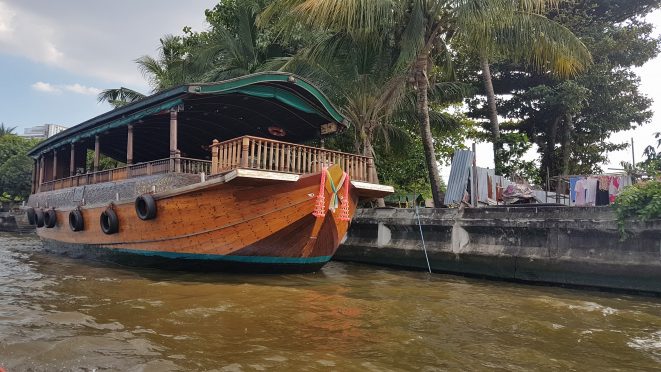
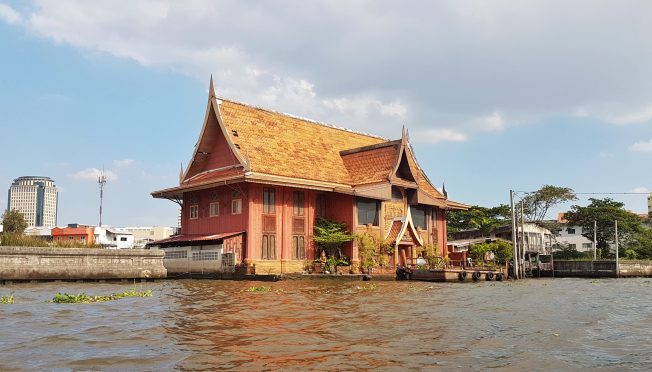
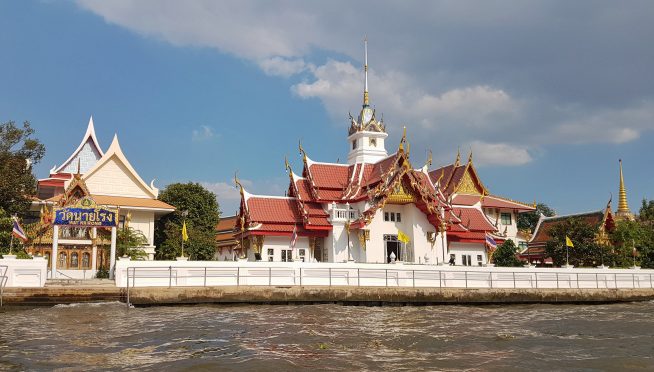 Heading back towards the pier were numerous other boats, including an interconnected section of four huge barges with a tugboat on either end. The river is a veritable highway, it’s just a pity about all the water hyacinth and the abundance of floating garbage.
Heading back towards the pier were numerous other boats, including an interconnected section of four huge barges with a tugboat on either end. The river is a veritable highway, it’s just a pity about all the water hyacinth and the abundance of floating garbage.
Back on land we headed for the Grand Palace… the crowds were huge, and people thronged through the streets. One look at the mass of humanity and we chose to give it a miss. Other less famous sites are where would be heading…
Before leaving our hotel, the Siam@Siam Design Hotel in the popular Pathum Wan District we decided to take it a little slower with some time spent walking through Lumpini Park, a favourite with the locals where men snooze under palm trees, mom’s watch their kids in the playpark and older folks get together to share a meal.

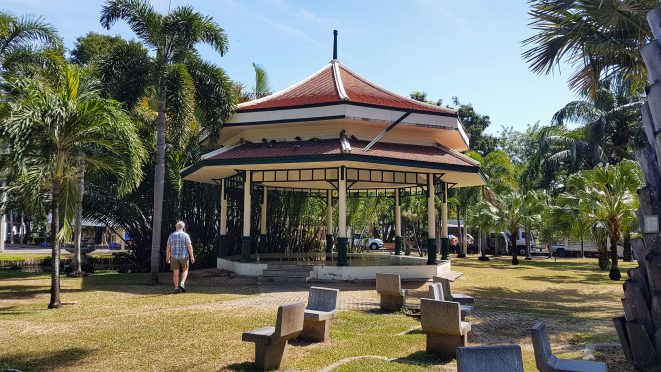 The nearby Bangkok Art and Culture Centre offered not only a wonderful reprieve from the heat with its well air-conditioned space, but thought-provoking and interesting exhibits as well as the option to support local artists and creatives by purchasing their wares.
The nearby Bangkok Art and Culture Centre offered not only a wonderful reprieve from the heat with its well air-conditioned space, but thought-provoking and interesting exhibits as well as the option to support local artists and creatives by purchasing their wares.
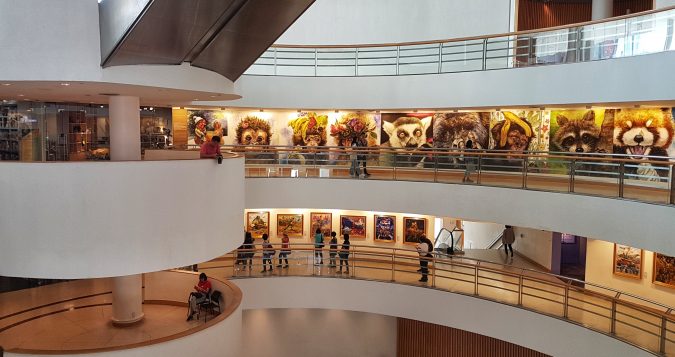
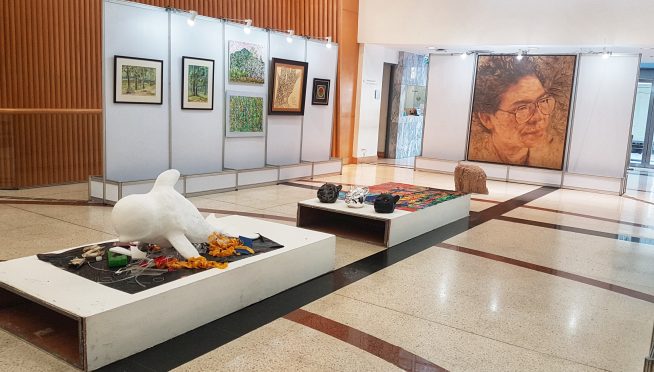 Still in search of not-so-famous sites we headed to the Pullman Bangkok King Power in the Ratchathewi District. Deciding to follow the advice on the map of the area we chose one of the local eateries along the popular Rang Nam Road (or alley as google maps calls it).
Still in search of not-so-famous sites we headed to the Pullman Bangkok King Power in the Ratchathewi District. Deciding to follow the advice on the map of the area we chose one of the local eateries along the popular Rang Nam Road (or alley as google maps calls it).
We chose Baan Ajarn, not due to its proximity to the hotel or its inviting exterior, but by the fact that it was packed with locals – always a good indication that the prices are affordable, and the food is good. Which it was on both accounts but listening to the soulful sound of Elvis Presley while dining was a tad random.
In keeping with our choice of going against the flow of over-tourism, we decided on a day incorporating a little-known palace, a local temple and a little-explored monument… all within a kilometre or so of our hotel.
We started with the Suan Pakkad Palace and Museum, where the restored Thai home of Royalty nestles within a lush garden beneath the BTS Skytrain line. There are archaeological, historical and cultural exhibits that give great insight into the region as well as that of Thai culture. The music room has an interesting assortment of traditional Thai musical instruments and the antique furniture throughout is exceptional.
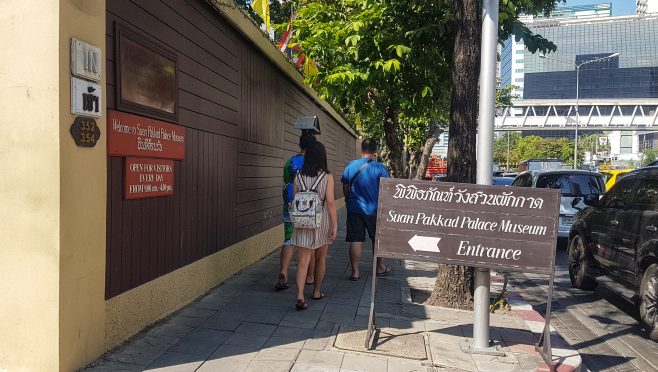
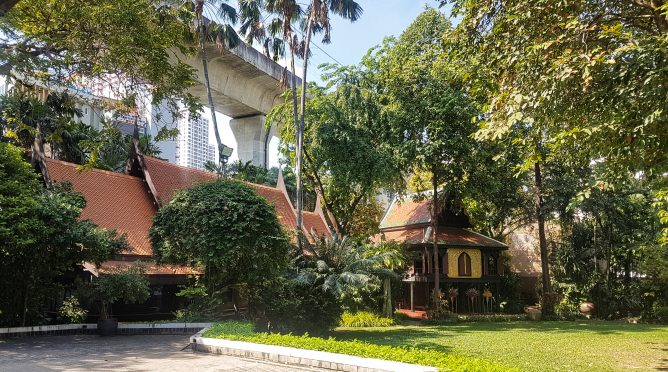 Next was our search for the Wat That Sanarun Sunthikaram Temple. Following rather obscure directions we headed under busy freeways and across busy roads, through little lanes and alleyways and past locals buying and selling freshly cooked food and produce, lazing on steps, having conversations… and just doing life.
Next was our search for the Wat That Sanarun Sunthikaram Temple. Following rather obscure directions we headed under busy freeways and across busy roads, through little lanes and alleyways and past locals buying and selling freshly cooked food and produce, lazing on steps, having conversations… and just doing life.

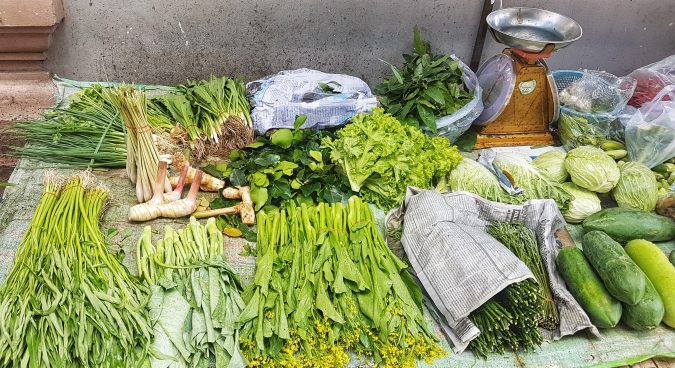 With the help of a friendly local who spoke English we found our way to the temple with its ornately carved architecture, golden spire and resident cat to the golden Buddha at least 10 meters tall with locals paying their respects.
With the help of a friendly local who spoke English we found our way to the temple with its ornately carved architecture, golden spire and resident cat to the golden Buddha at least 10 meters tall with locals paying their respects.
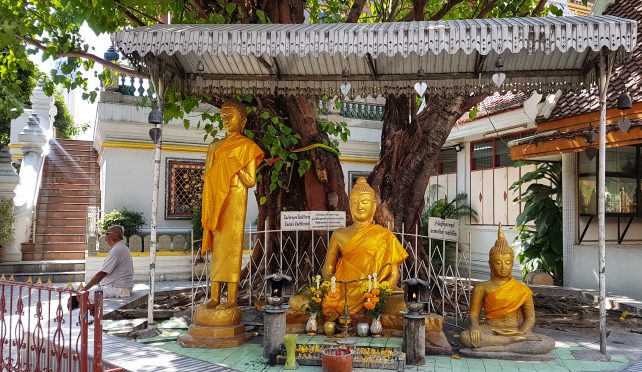 Next was more dodging traffic and side streets with shops, markets and food to the Victory Monument, erected in 1941 to commemorate the Thai victory in the France-Thai War. The central obelisk is surrounded by five statues that honour the army, navy, air force and the Thai people. It is in the centre of a traffic circle, so we chose to view it from afar, not wanting to risk our lives by gambling with the Bangkok traffic at close quarters!
Next was more dodging traffic and side streets with shops, markets and food to the Victory Monument, erected in 1941 to commemorate the Thai victory in the France-Thai War. The central obelisk is surrounded by five statues that honour the army, navy, air force and the Thai people. It is in the centre of a traffic circle, so we chose to view it from afar, not wanting to risk our lives by gambling with the Bangkok traffic at close quarters!
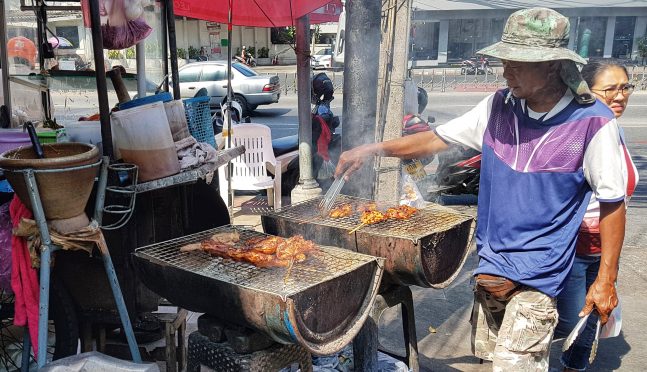
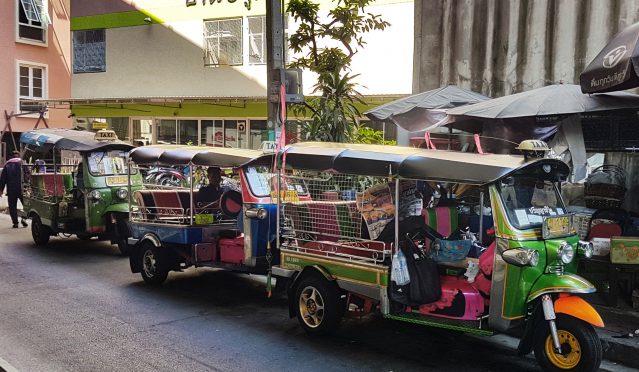 When in Bangkok one must visit a night market. We chose not to do the exceptionally popular Chatuchak Market and instead took a Grab taxi (like Uber) to the Ratchada Rot Fai Train Night Market.
When in Bangkok one must visit a night market. We chose not to do the exceptionally popular Chatuchak Market and instead took a Grab taxi (like Uber) to the Ratchada Rot Fai Train Night Market.
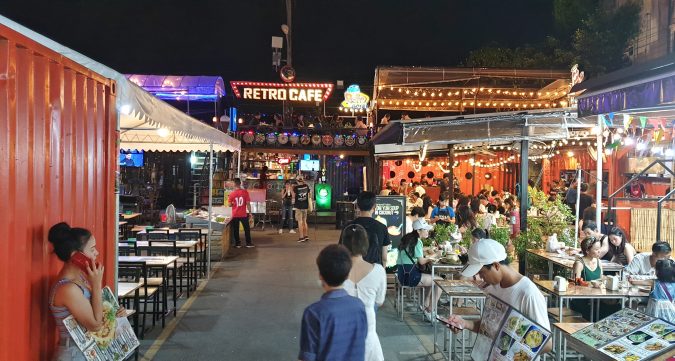
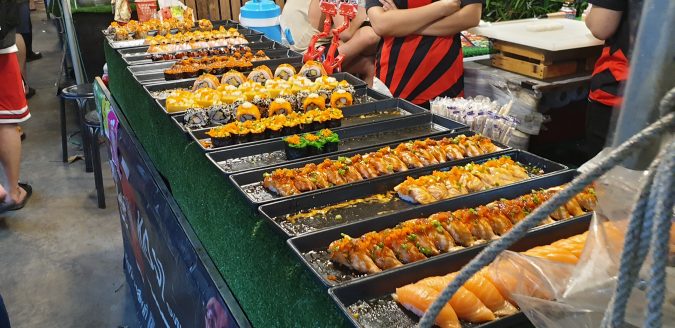 A delightful market where the locals go to shop and eat. There are long avenues selling clothes, curios and a variety of other goods but the highlight for most seemed to be the abundance of food stalls selling everything from fresh coconut milk and iced smoothies, to mountains of seafood, sizzling satays and just about everything you could think of – including trays of crispy fried insects.
A delightful market where the locals go to shop and eat. There are long avenues selling clothes, curios and a variety of other goods but the highlight for most seemed to be the abundance of food stalls selling everything from fresh coconut milk and iced smoothies, to mountains of seafood, sizzling satays and just about everything you could think of – including trays of crispy fried insects.
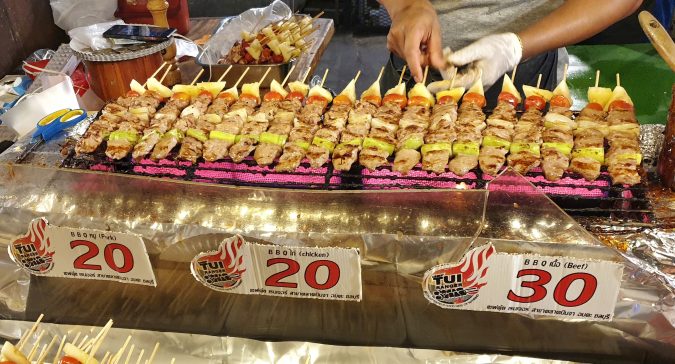
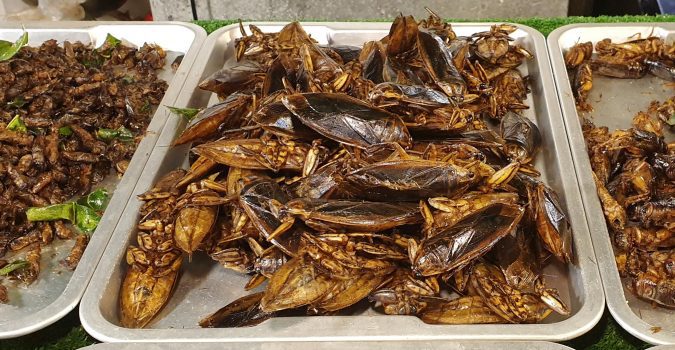 There were bars in abundance each pumping out a mixture of Thai and popular western music for patrons enjoying the local tipple.
There were bars in abundance each pumping out a mixture of Thai and popular western music for patrons enjoying the local tipple.
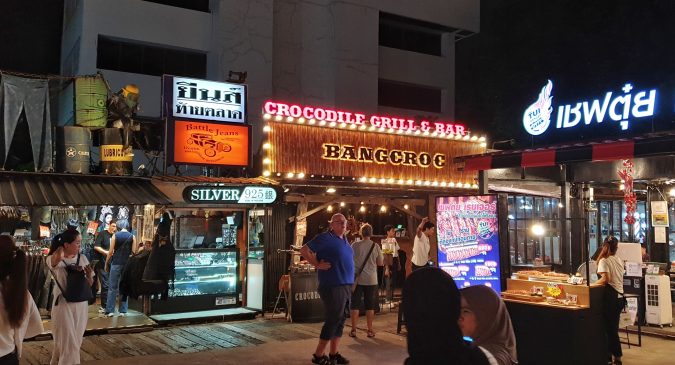
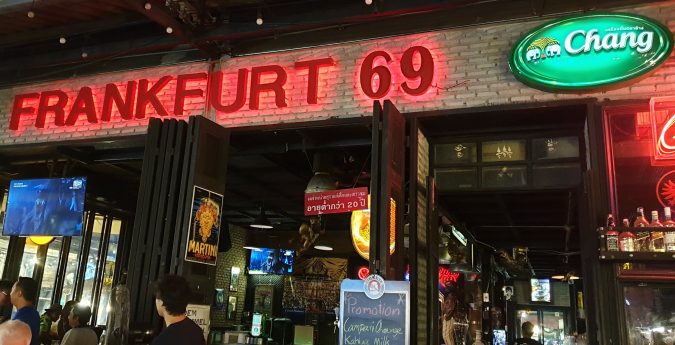 One cannot visit Bangkok without a visit to Chinatown. Most people visit in the evening for the abundant street cafes, food stalls and vibrant nightlife. Choosing again to be different we took the Sky Train and a local commuter bus and arrived there mid-morning.
One cannot visit Bangkok without a visit to Chinatown. Most people visit in the evening for the abundant street cafes, food stalls and vibrant nightlife. Choosing again to be different we took the Sky Train and a local commuter bus and arrived there mid-morning.
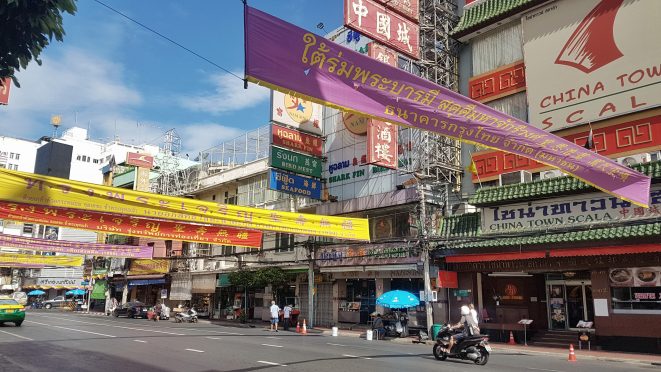 The streets and alleyways were a hive of activity, a Chinese man was setting out his display of decorative lanterns, another was readying his display of delicious looking giant peaches, another was pulling a cart loaded with produce.
The streets and alleyways were a hive of activity, a Chinese man was setting out his display of decorative lanterns, another was readying his display of delicious looking giant peaches, another was pulling a cart loaded with produce.
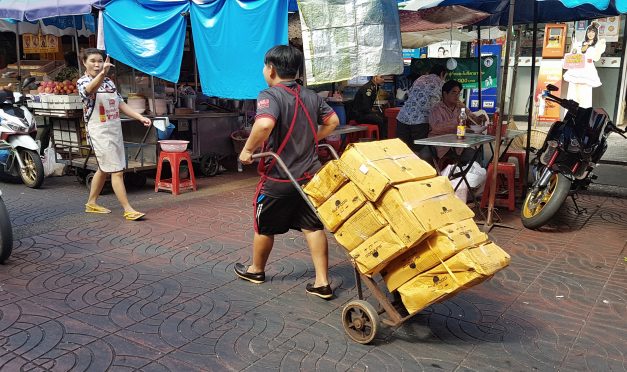
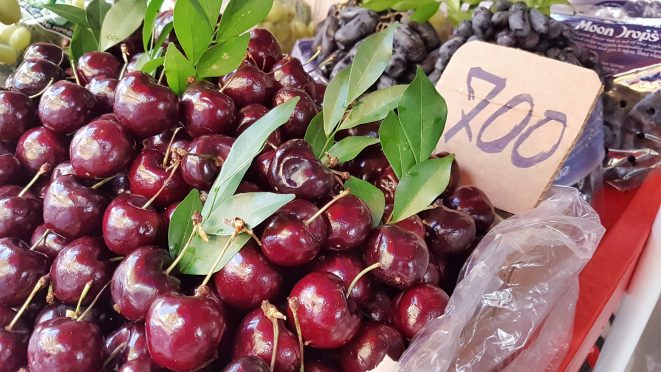 There were odd shaped grapes and the fattest cherries I had ever seen, large bags of dried shrimp and weird looking mushrooms. Sugar cane juice being made to order and bananas sizzling on the grill. There was even a coffee shop, V Coffee by Earth, complete with a trendy looking barista who made the yummiest iced cappuccinos. Hairbands, Christmas hats and every conceivable ‘made in China’ item you could imagine was for sale – including stainless steel straws. And the locals were shopping… and eating in abundance.
There were odd shaped grapes and the fattest cherries I had ever seen, large bags of dried shrimp and weird looking mushrooms. Sugar cane juice being made to order and bananas sizzling on the grill. There was even a coffee shop, V Coffee by Earth, complete with a trendy looking barista who made the yummiest iced cappuccinos. Hairbands, Christmas hats and every conceivable ‘made in China’ item you could imagine was for sale – including stainless steel straws. And the locals were shopping… and eating in abundance.
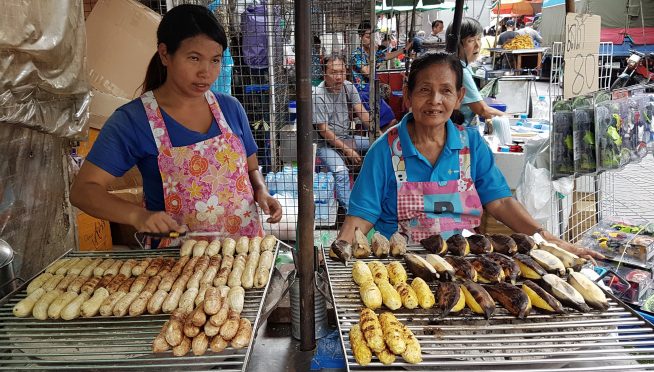
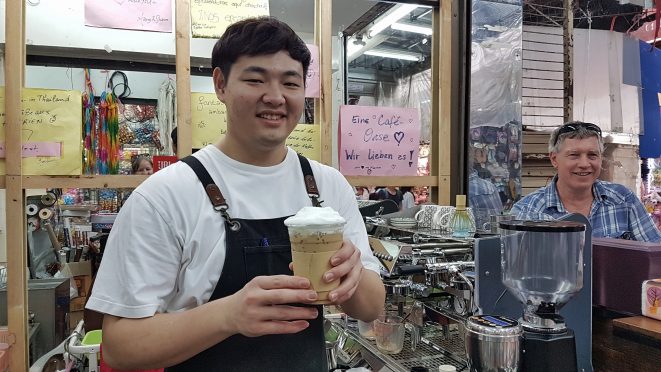 At a local Chinese temple tables groaned under the weight of offerings, incense sticks smouldered, and candles burned. Deities shone brightly as their golden beings caught the light and worshipers bowed their heads in reverence to their gods. The colourful façade of the entrance contrasting with the clear blue of the sky.
At a local Chinese temple tables groaned under the weight of offerings, incense sticks smouldered, and candles burned. Deities shone brightly as their golden beings caught the light and worshipers bowed their heads in reverence to their gods. The colourful façade of the entrance contrasting with the clear blue of the sky.
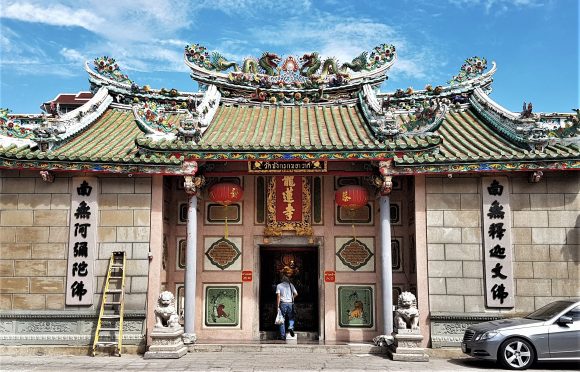
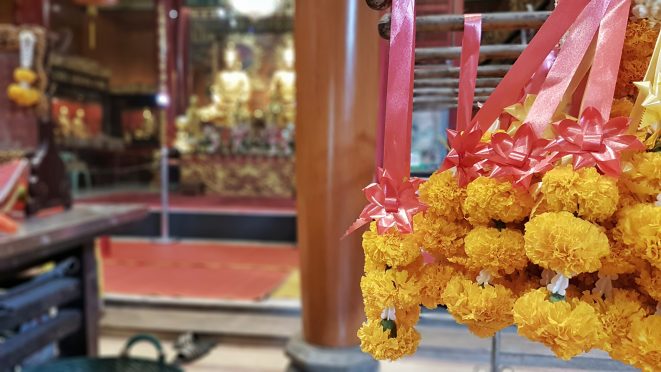
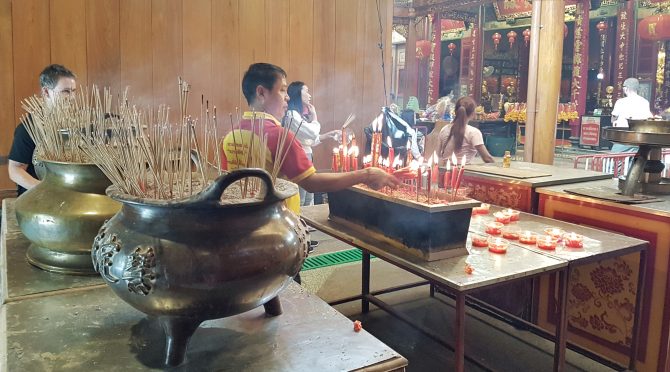 Chinatown was busy but not to the extent that the evenings would be – we had been warned to beware of pickpockets and petty crime, but never once did I feel threatened or uncomfortable. A definite benefit of visiting during ‘off-peak’ times.
Chinatown was busy but not to the extent that the evenings would be – we had been warned to beware of pickpockets and petty crime, but never once did I feel threatened or uncomfortable. A definite benefit of visiting during ‘off-peak’ times.
Choosing to take the off the beaten track route through this wonderful city enabled us to see a side to Bangkok I never thought possible. It’s the Bangkok I would recommend, it’s the experience that benefits the locals far more than an ‘insulated, glitzy hotel and air-conditioned cab’ type experience could ever offer. And it relieves the pressure on the over touristed sites that eventually, because of their popularity, lose their charm.
www.pullmanbangkokkingpower.com



